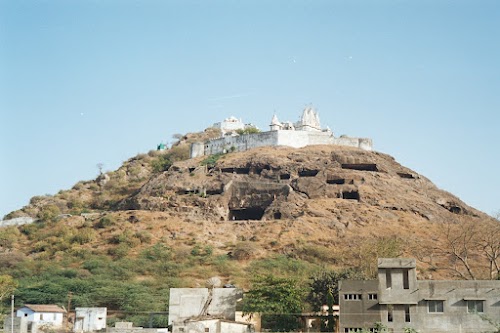
Talaja Caves temple
Palitana, India
- Admire the Ebhala Mandapa architecture.
- Enjoy panoramic views of the landscape.
- Explore the ancient rock-cut caves.
- Learn about Buddhist monastic life.
- Photography of the cave carvings.
Known for:
Description:
The Talaja Caves are a group of 30 rock-cut Buddhist caves located near Palitana in Gujarat, India. Carved into a monolithic rock formation, these caves date back to the 2nd century BC. The Ebhala Mandapa, a large hall, is a prominent feature, showcasing early Buddhist architectural styles. The caves offer a glimpse into ancient monastic life and the spread of Buddhism in the region. Visitors can explore the intricate carvings, chaitya halls (prayer halls), and viharas (monasteries), experiencing the serene atmosphere of this historical site. The caves provide panoramic views of the surrounding landscape, enhancing the spiritual and historical significance of the site. It's a relatively less crowded destination, offering a peaceful retreat for history enthusiasts and spiritual seekers.
History:
The Talaja Caves are believed to have been carved during the reign of the Kshatrapa dynasty in the 2nd century BC, making them one of the earliest examples of Buddhist cave architecture in Gujarat. They served as a monastic complex for Buddhist monks, providing a place for meditation, study, and residence. Over time, the caves witnessed the decline of Buddhism in the region and were eventually abandoned. The site was later rediscovered and has since been recognized for its historical and archaeological importance. The caves provide valuable insights into the evolution of Buddhist art and architecture in India. The presence of the Ebhala Mandapa suggests a significant monastic presence and the caves were a crucial center for Buddhist learning and practice.